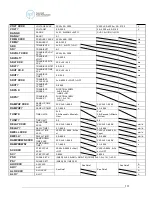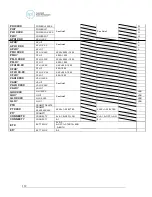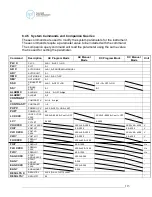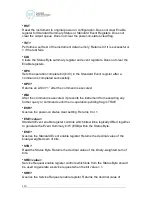
101
be terminated with LF=(0AH), such as ”TEST”+LF.
8.2
GPIB Interface
8.2.1 GPIB Connector
Connection is usually accomplished with a 24-conductor cable with a plug on one
end and a connector at the other end. Devices may be connected in a linear,
star or a combination configuration.
The standard connector is the Amphenol or Cinch Series 57 Microribbon or AMP
CHAMP type. The GPIB uses negative logic with standard transistor-transistor
logic (TTL) levels. When DAV is true, for example, it is a TTL low level (
0/8 V),
and when DAV is false, it is a TTL high level (
2.0 V).
Restrictions and Limitations on the GPIB
•
A maximum separation of 4 m between any two devices and an average
separation of 2 m over the entire bus. Z
•
A maximum total cable length of 20 m.
•
No more than 15 device loads connected to each bus, with no less than two-
thirds powered on. For example 1 GPIB controller and a maximum of 14
GPIB instruments.
•
Note:
A bus extender, which is available from numerous manufacturers, is
available to overcome these limitations.
8.2.2 GPIB Address
Each device on the GPIB (IEEE-488) interface must have a unique address. You
can set the address of the 400XAC to any value between 0 and 30. The address
can only be set from the front panel. The address is stored in non-volatile
memory and does not change when the power has been off or after a remote
reset.
•
The address is set to 8 when the instrument is shipped from the factory.
8.3
Interface Functions
The capability of a device connected to the bus is specified by its interface
functions. These functions provide the means for a device to receive, process,
and send messages over the bus. The interface functions are listed in the chart
below.
















































